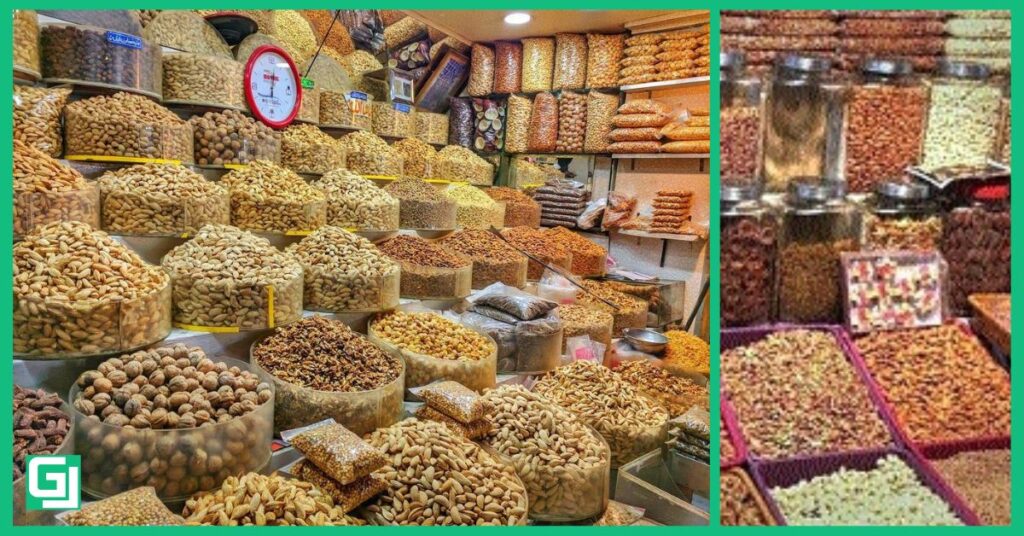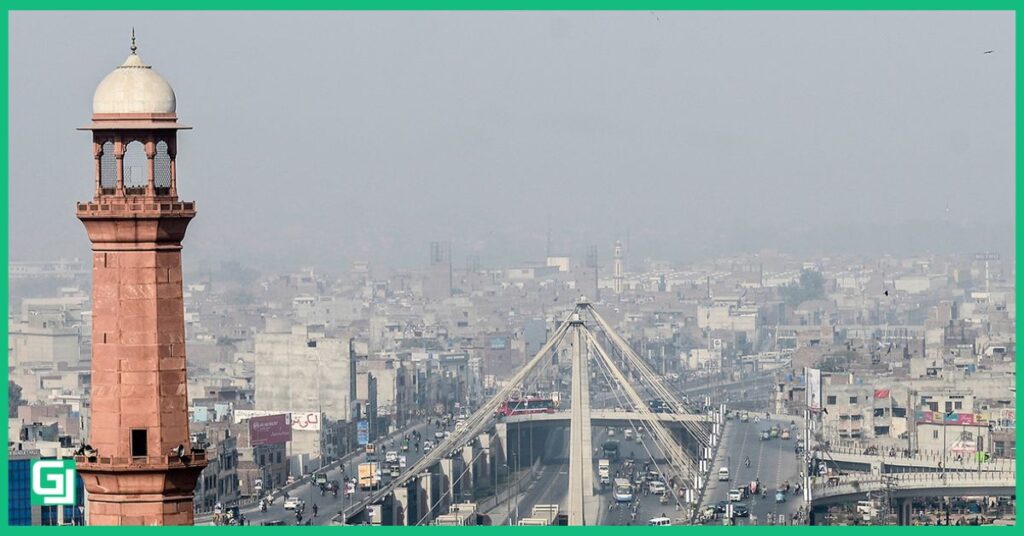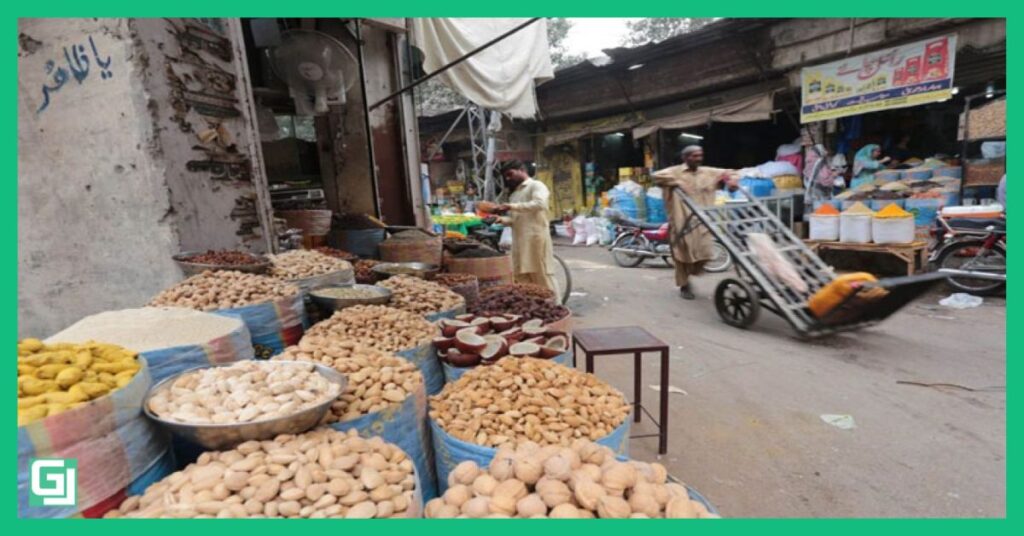Akbari Mandi, located near the historic Akbari Gate in Lahore, is a Mughal-era wholesale market that has flourished since the reign of Emperor Akbar. Known as one of South Asia’s largest and busiest trade hubs, it is famous for its spices, dry fruits, grains, and daily sugar price updates, making it a key economic driver in Pakistan. Over the centuries, Akbari Mandi Lahore has played a vital role in shaping the region’s commerce, supplying retailers, households, and industries nationwide. What makes this market truly remarkable is its unique ability to preserve centuries-old heritage and culture while continuing to serve as a modern trade powerhouse.
The Legacy of Akbari Mandi
Nestled within the historic heart of Lahore, Akbari Mandi is more than just a market—it is a vibrant cultural landmark that has stood the test of time. Founded during the Mughal era under Emperor Akbar, this wholesale market continues to define Lahore’s trading identity. Whether it’s spices, rice, dry fruits, or sugar, Akbari Mandi Lahore remains the go-to hub for traders and shopkeepers across Pakistan.
For centuries, it has connected farmers, merchants, and consumers, making it a cornerstone of South Asia’s trade. In this article, we’ll explore its history, location, dry fruit stalls, sugar price trends, and modernization efforts, while highlighting why Akbari Mandi is still relevant today.
History of Akbari Mandi
The story of Akbari Mandi Lahore begins in the Mughal period, when Emperor Akbar ordered the establishment of a wholesale market outside the congested Walled City. Located near the Akbari Gate, it quickly grew into one of the largest trading centers in South Asia.
During colonial times, the British East India Company also recognized its strategic importance, using the mandi as a hub for commodities like grains and spices. Even today, remnants of Mughal and colonial influence can be seen in its architecture, trading practices, and community culture.
Akbari Mandi Location and Accessibility
The location of Akbari Mandi plays a huge role in its success. Situated close to the Akbari Gate of Lahore’s Walled City, it connects directly to highways and transport routes. This makes it easy for traders from Punjab, Sindh, Khyber Pakhtunkhwa, and even Gilgit-Baltistan to deliver goods.
Visitors are often greeted by a labyrinth of bustling lanes, loaded donkey carts, trucks unloading goods, and the aroma of spices filling the air. Despite being centuries old, Akbari Mandi remains a central hub for trade and commerce in Lahore.
Spice Trade: The Heart of Akbari Mandi
Known as Pakistan’s spice capital, Akbari Mandi houses thousands of varieties of herbs and spices. These include:
- Red chili powder and turmeric
- Coriander, cumin, and mustard seeds
- Cardamom, cinnamon, and cloves
- Locally grown herbs and imported saffron
For centuries, this market has supplied retailers and food industries across Pakistan. Bulk purchases at Lahore’s Wholesale Market ensure stable supplies for restaurants, caterers, and export businesses.
Akbari Mandi Dry Fruit Business

A visit to Akbari Mandi dry fruit lanes is like stepping into a treasure trove of flavors. Traders stock almonds from Gilgit, walnuts from Kashmir, pistachios from Iran, and dates from Baluchistan.
Dry fruits are especially popular in winter, when families purchase them in bulk for desserts and traditional dishes. Many exporters also rely on Lahore’s Wholesale Market to supply premium-quality dry fruits for international markets.
Akbari Mandi Sugar Price Today and Market Trends
Every day, thousands of traders search for “Lahore’s Wholesale Market sugar price today” because the mandi sets the wholesale sugar trend in Lahore. Fluctuations in sugar prices directly affect bakeries, sweet shops, and households.
Factors influencing sugar prices include:
- Seasonal demand
- Government policies and subsidies
- Import/export changes
- Weather and crop yields
Besides sugar, the mandi also sets prices for rice, wheat, pulses, and cooking oils, making it a barometer of Pakistan’s food economy.
Cultural Heritage and Significance
Beyond commerce, Akbari Mandi Lahore is a cultural hub. Generations of families have run shops here, passing on skills and relationships. Its atmosphere is one of storytelling, bargaining, and tradition, where traders know their customers personally.
For historians, the mandi represents a rare example of living Mughal-era heritage still functioning in modern Pakistan.
Economic Powerhouse of Lahore

With over 800 shops and daily turnover worth millions, Akbari Mandi is a key pillar of Lahore’s economy. Truckloads of sugar, rice, and spices move in and out daily, supporting retailers across the country.
Economists view Lahore’s Wholesale Market as an economic engine, linking farmers, wholesalers, and industries. Its influence stretches beyond Lahore, impacting prices and availability nationwide.
Modern Challenges Facing Akbari Mandi
Despite its success, Akbari Mandi faces issues that could hinder growth:
- Severe traffic congestion in narrow streets
- Storage and sanitation problems due to outdated facilities
- Price volatility linked to global supply chains
- Competition from supermarkets and online markets
If left unaddressed, these challenges could reduce the mandi’s competitiveness in the digital age.
Restoration and Government Initiatives
To preserve its heritage, the Punjab government and cultural bodies have started restoration projects for Akbari Mandi. These include:
- Renovating Akbari Gate and nearby structures
- Installing solar lighting and modern drainage
- Improving walkways and tourist facilities
- Digitizing pricing systems for transparency
These steps aim to make Historic Spice Bazaar both a functional trading hub and a tourist-friendly heritage site.
Tourism and Global Recognition
Tourists visiting Lahore’s Walled City often explore Lahore’s Wholesale Market for its vibrant energy. Its colorful spice stalls and dry fruit shops remind visitors of Istanbul’s Grand Bazaar or Delhi’s Chandni Chowk.
For international researchers, the mandi is a case study in sustainable heritage commerce, blending history with modern trade.
Why Akbari Mandi Still Matters
In an era dominated by e-commerce, Akbari Mandi stands strong because it offers:
- Authenticity of wholesale trading
- Trust built over generations
- Cultural richness alongside commerce
- Fresh, affordable bulk products
It is not just a market; it is a heritage hub that sustains livelihoods and preserves Lahore’s identity.
Conclusion
From its Mughal origins to its modern restoration, Akbari Mandi continues to embody the spirit of Lahore—historic, bustling, and ever-evolving. Whether you’re looking for spices, dry fruits, or today’s sugar price, Historic Spice Bazaar remains the lifeline of wholesale trade in Pakistan. With restoration projects underway, this iconic market is set to shine brighter as a modern trade and heritage hub, connecting its glorious past with a promising future.
FAQs
Where is Akbari Mandi located?
Akbari Mandi is near Akbari Gate in Lahore’s Walled City, making it easily accessible from all parts of the city.
What is Akbari Mandi famous for?
It is famous for wholesale spices, dry fruits, sugar, rice, and pulses.
Can tourists visit Historic Spice Bazaar?
Yes, tourists often visit to explore its historic charm and vibrant atmosphere.
How are sugar prices set in Akbari Mandi?
Prices are negotiated daily based on supply, demand, and government policies.
Why is Historic Spice Bazaar important for Lahore’s economy?
It supplies bulk goods to retailers and industries, making it a vital part of Pakistan’s supply chain.

